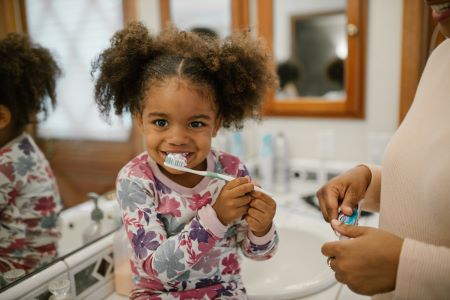Is fluoride toothpaste safe for toddlers? debunk common myths, and provide evidence-based information to help parents make informed decisions about their children’s oral health.
Is Fluoride Toothpaste Safe?
The Benefits of Fluoride
Fluoride is widely recognized as a powerful tool in preventing tooth decay, and its benefits are well-documented. When used in appropriate amounts, fluoride strengthens tooth enamel, making it more resistant to acid attacks from plaque bacteria and sugary foods. This results in a reduced risk of cavities and the preservation of healthy teeth. Fluoride also helps in remineralizing areas of the teeth that have been weakened by early decay, preventing the need for invasive dental procedures.
Understanding Fluorosis
One of the primary concerns regarding fluoride toothpaste is the risk of fluorosis, a cosmetic condition that affects tooth enamel. Fluorosis occurs when children are exposed to excessive fluoride during tooth development, typically before the age of eight. It manifests as white spots, streaks, or even brown discoloration on the teeth. It is important to note that fluorosis is primarily a cosmetic issue and does not affect the function or health of teeth.
Recommended Fluoride Dosage
To ensure the safe use of fluoride toothpaste for toddlers, it is crucial to follow recommended guidelines. The American Dental Association (ADA) recommends using a smear of fluoride toothpaste for children under three years old. For children between the ages of three and six, a pea-sized amount is appropriate. These small amounts provide the necessary benefits of fluoride while minimizing the risk of fluorosis.
Monitoring Toothpaste Usage
Parents play a crucial role in ensuring the safe and effective use of fluoride toothpaste. Until the age of six, children lack the necessary coordination to brush their teeth independently. Therefore, parents should supervise brushing sessions to ensure that children do not ingest excessive amounts of toothpaste. Teaching children to spit out the toothpaste after brushing further reduces the risk of swallowing excessive fluoride.
Alternatives to Fluoride Toothpaste
For parents who remain concerned about fluoride toothpaste, alternative options exist. Non-fluoride toothpaste, specifically formulated for toddlers, can be used. However, it is important to note that the efficacy of non-fluoride toothpaste in preventing tooth decay may be lower compared to fluoride-based products. Additionally, adopting a healthy diet, limiting sugary foods and beverages, and regular dental check-ups are essential for maintaining good oral health.

Fluoride toothpaste, when used appropriately, is considered safe and highly beneficial for toddlers in preventing tooth decay and promoting good oral health.
Concerns about fluorosis can be mitigated by following recommended guidelines for toothpaste dosage and supervision.
Ultimately, parents should consult with pediatric dentists and healthcare professionals to make informed decisions about their child’s oral hygiene routine. By balancing the benefits and risks associated with fluoride toothpaste, parents can ensure their toddlers enjoy optimal dental health for years to come.
